After a breakfast powered by the Vache-qui-rit cheese, something that I am eating more here than anywhere else, I hit the road, for the first time looking like a desert.

I am looking for those high snowy mountains that should be right by me. They seem to have disappeared …. it is indeed foggy but they should be here … I finally realize that they look completely different from yesterday evening, that they are very close but also hardly discernible under the strong sun.

I realize another strange thing. I am on my highest gear on a flat ground. Going at 40 km/h. Effortlessly. And that is not normal at all. Usually, I cycle on average around 17 – 18 km/h on the flat. Overall in the day, including breaks, pictures, food and everything else, my average is 10 km/h. Which makes 80 km per day if I get on the saddle at 10 am and stop at 6 pm. This 40 km/h is just insane, and when the road does a S-turn around a village, I understand that the wind is very strongly helping me.
As a result, I reach quickly Midelt on the N13, peaking at 50 km/h on the flat (hmmm, probably slightly downhill), which I enter while a city employee waters a garden, a surprising sight compared to my very dry first 40 km. Midelt is a just-passing oasis for people travelling from the center of Morocco to the desert. It is apparently famous for mines (in the past) and apples, and if one sees apples from Morocco in a European supermarket, it should be from the Midelt farms.
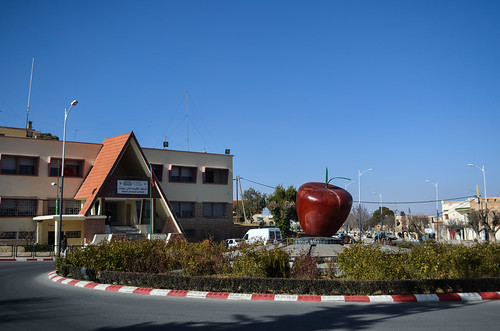
I eat a good tagine, and since I feel I won’t be talking to many people on those roads, I accept the tea invitation at the Berber shop, even though I know it will cost me to be presented and explained dozens of carpets again. I take the opportunity of being in “town” to buy a Maroc Telecom 3G SIM card, as I had no network during a full day in the Middle Atlas with Meditel. I have become addicted to Google Maps or OpenStreetMap on my phone. I check into it almost every little path I cross to see where it leads, but for this I need an internet connection throughout the day.
I leave Midelt late, and I notice out of town already that I forgot to buy bread. I stop at the café of the last chance, where I am sent back to town. Rather than cycling back 3 km, I take the risk of going forward without bread and hoping to find it in a village. Rich, the next town indicated, is 75 km away, not reachable today. But there must be villages in between. One is in 30 km, says the café man. So I continue with this not-so-reasonable idea, but after all it is a test of the mistakes that will be unaffordable in the real desert, the Sahara.
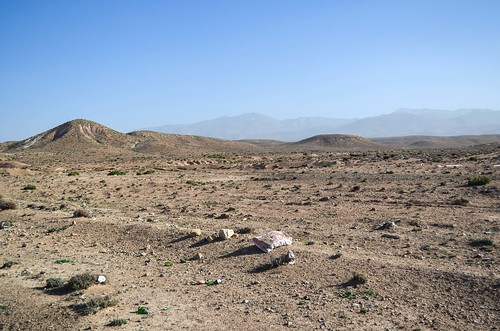
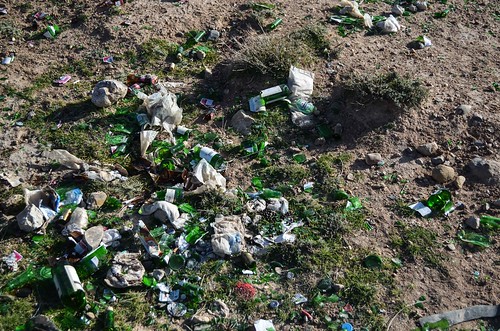
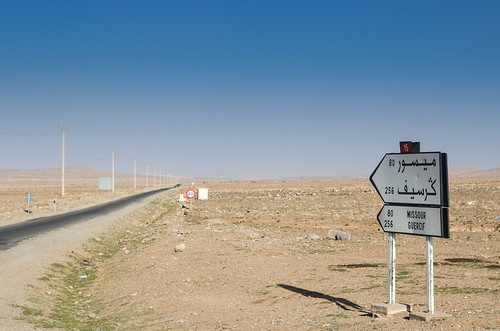
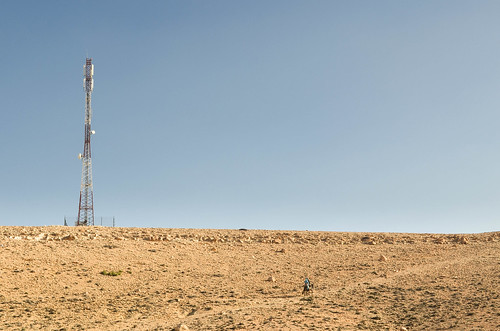
The first village comes before 30 km. There is one shop, filled mostly with empty boxes. When I ask for bread, one of the men hanging out there goes away and looks for something. He comes back telling me that bread is not sold in the village, and gives me a big homemade Berber khobz without wanting anything in return. I am a bit surprised, but it is true that people here are different from the north. Berber girls on the road, and even ladies, greet me and some even smile! It seems also that I can speak French with any citizen and villager here, while in the North I had to deal with the only man of the group who knew Spanish or French (excluding the city touts of course, who speak everything until you buy something).
I start in the late afternoon the easy ascent of the pass of Tizi n’Talghaumt across the High Atlas. I stop in the middle of it to chat with someone with a car problem by the road. It’s a former member of the army who shows me the judgement letter sentencing him to 2 months of prison for transporting 1000 € of alcohol and selling it illegally to Muslims. Alcohol is taboo, forbidden and hidden in Morocco, but definitely omnipresent.
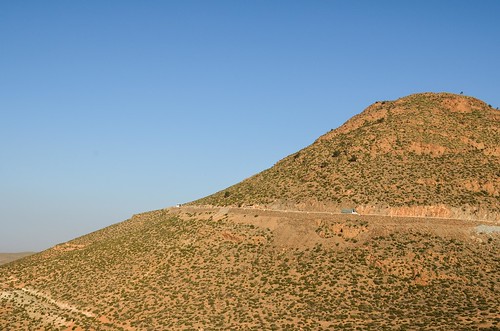
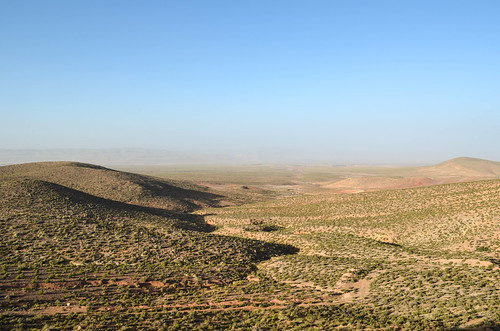
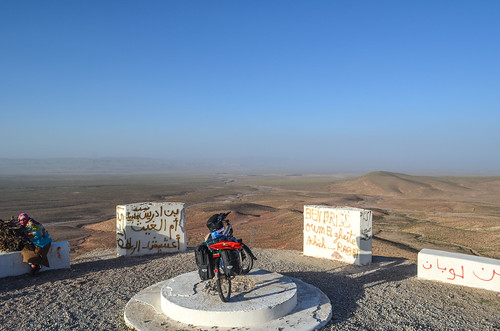
The uphill road until the the 1907 m pass of Tizi n’Talghaumt goes well and quickly, since Midelt is already at 1500 m. As usual, it looks empty at first, but there are actually people walking everywhere in the middle of nowhere.
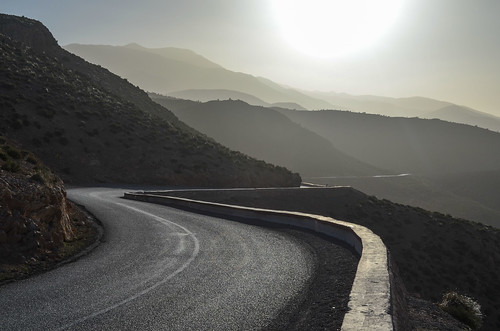

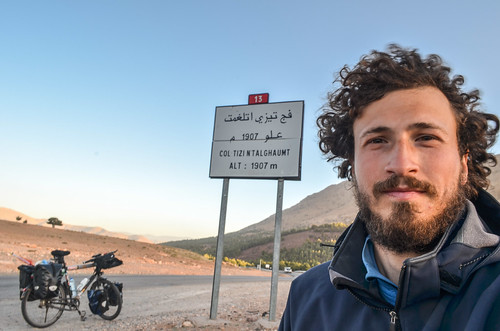
After the pass, the road goes slightly downhill. It remains high, crosses a mix of plateau and mountains, with long flat stretches. It is very beautiful and I am already looking forward to camping in this perfectly deserted place.
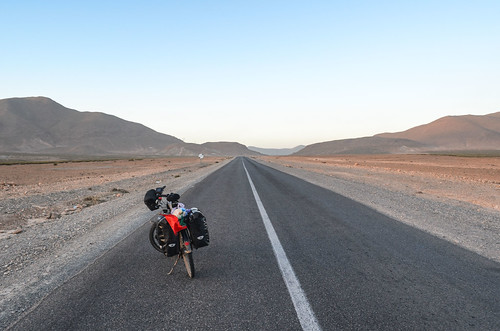
At a “barriere de neige”, I have a quick chat with the guard, who points his village to me, 5 km away. Now that I stopped and took time to look around, I see many houses in this apparently deserted area, and even the village 5 km away with the minaret. He is telling me that I will want to sleep at a place 2 km further and that I should follow that pickup … Doing otherwise would look like a desertion, so 2 km later I am awaited by Aicha at her café where I can sleep for 50 dh. She learnt French only by talking to tourists and maintains a guestbook of all foreigners who stopped at her place. There’s little reason to stop here for motorized people, but according to the books, she has received for a café or for the night one or two foreigners every month since 2007.
Finally, thanks to the wind, I managed to cycle 85km, including a pass at 1907 m, departing at 11 am and taking a 2 hour lunch break. The asphalted roads and the wind are my best friends today. But they will be me worst enemy in the other direction, when heading towards the coast. I was told that the wind always comes from the Atlantic Ocean but starts in the afternoon, so I may have to get up super early in the near future if I want to avoid the powerless feeling of cycling against the wind.
I also try the Maroc Telecom 3G SIM card, and it works brilliantly. With my N900 serving as a router, I will even be able to upload pictures from inside the snow or the desert.
The next morning is spent entirely on cleaning my bike. I have not done any maintenance since Spain, and despite the rain, snow and mud, it has been behaving well. It has now recovered its black shine, and as I changed the brake pads, it feels like another one. Moving from half a brake to 2 strong brakes is not a small evolution.
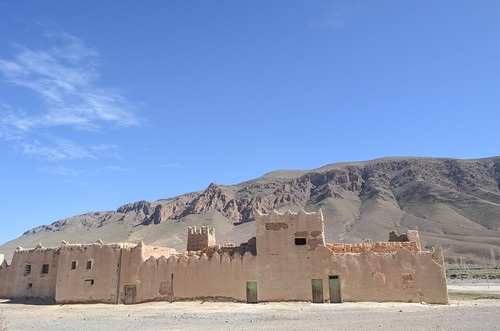
The day is as windy, or more, than yesterday. At some points where I take a turn behind a hill, I really feel it in my back, pushing me like a sail, in a strong acceleration.
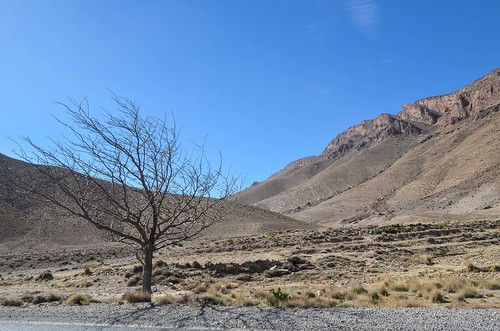
The sun is strong too. I really need to put something over my head and I am not likely to show my forearms or to switch my long pants for short ones any time soon. The nights are cold because they are winter nights above 1500 m in the hills and mountains, but the days are hot like the sun of the desert. This area sees big temperature gaps.

The road is straightforward and easy, but I still need to be careful. When I see a truck coming in front of me, and another one in my rear mirror, I know they will not use their brakes and will pass 1 cm from each other, and 1 cm from me, if I don’t get out of the asphalt.
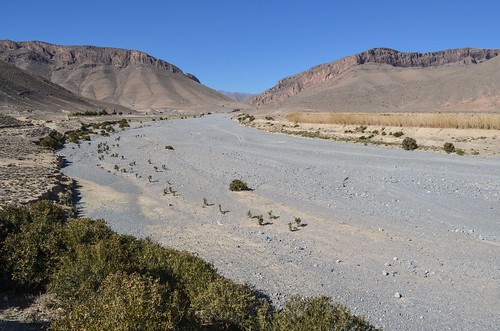
The area is dry but a canal and plenty of water go through it. Those are the same water supply systems I saw in Andalusia, built by the Arabs when they occupied the south of Spain.
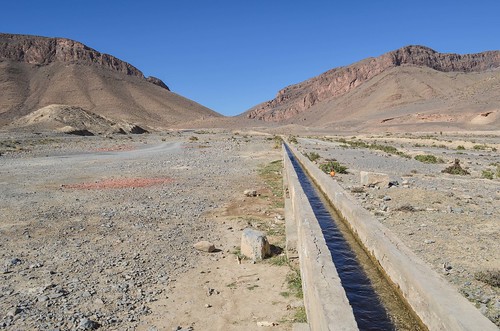

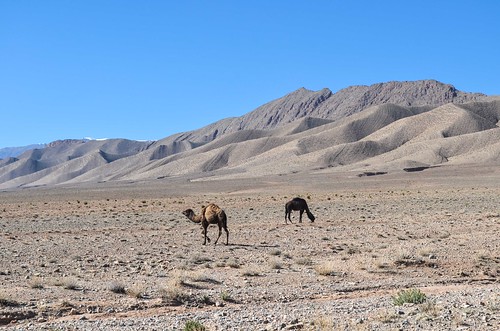

I stop in Rich, a small and dusty town lost in the Atlas, to eat, drink tea and pack more food. I learn that when a shopkeeper asks for 20 times the price of an item, he counts in rials (1 dirham = 20 rials) and is not trying to rip me off (which is the case if he asks 5 or 10 times the price). And when people talk about millions, it is millions of centimes of dirhams (1 dirham = 100 centimes). The Eagles of Nigeria have fun against Mali while I finish my chiba tea and it is time to cycle a last hour until the Ziz gorges, marked as a scenic road on my map, and camp there.

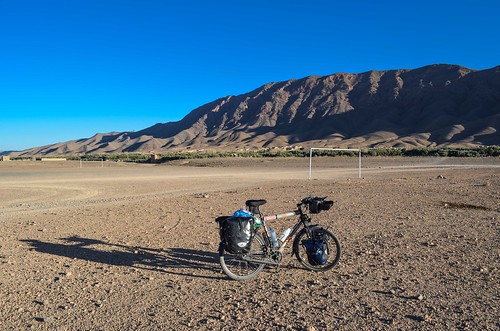
This place is just 5 km away from Tazmamart, a secret camp for political prisoners and opponents in use until 1991.

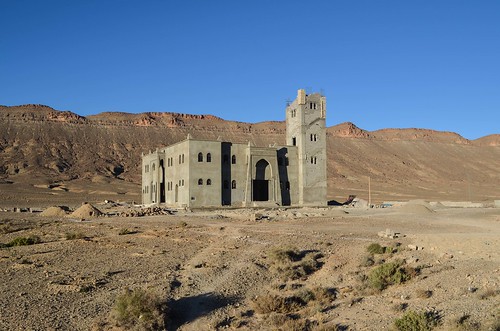
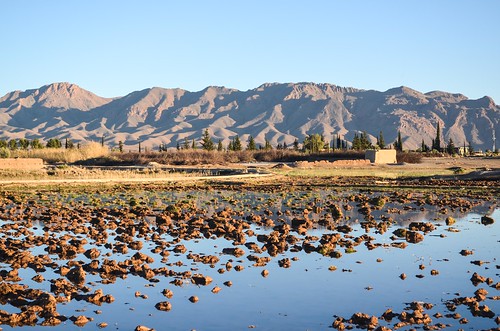
At the end of my day, I meet an interesting sign: “Thermal station”. It is not on any map I have, but it is a good surprise. I am told there that there is an open air bath, with hot water, by the river. Soaking in hot water is the perfect way to end the day, but I am now facing a big dilemma: to stay here or to cycle 2 km further to end up in the Ziz gorges, flagged as a scenic road on the Michelin map, for the night?
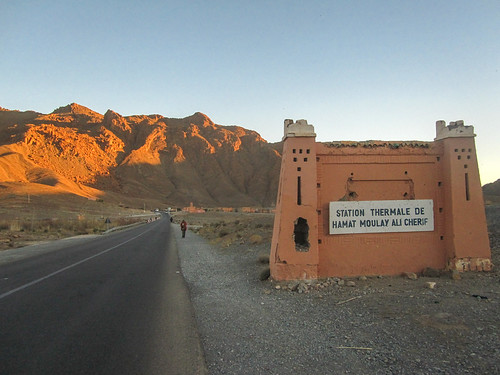
That’s when Zaid shows up and invites me to stay at his place 10 km further. I make first a visit to the hot spring by the river, at dusk. I must wait a bit until it’s the men’s turn. There is a pool of hot water by the river, which smells right the sulfur, into which we can soak and watch the clear sky getting populated with stars. It would be perfect if the pool had 10 cm more water, because with the current low volume, we are forced to spread water over our belly. The river floods sometimes washes the hot pool away and they don’t dig it regularly. But it is almost a hokkaido-rotenburo-class hot spring!
After this very good surprise, we take the bike in a grand taxi and get home for dinner and tasting of eau de vie from dates, while watching TV and ads explaining that roundabouts have a specific usage and the priority-to-the-right does not apply …







Hey! That is insane but so cool! Just like you 😉 Beijos :* Stay safe and/or at least alive :*
Am trying! Sandy greetings to Baden
Bonjour jb je vois que tout se passe bien tant mieux d’ailleurs.
Les photos sont toujours aussi belles
Bonne continuation.
Salut laurent, j’espère que ca te donne des idées pour ton prochain voyage, meme sans traverser l’Espagne Ryanair vole vers Fes et Marrakech.
Et ben, c’est bien beau tout ça… C’est pas Tottori-sakyū non plus, mais il y a de l’idée!
Le tottori-sakyuu est juste dans le post d’après !